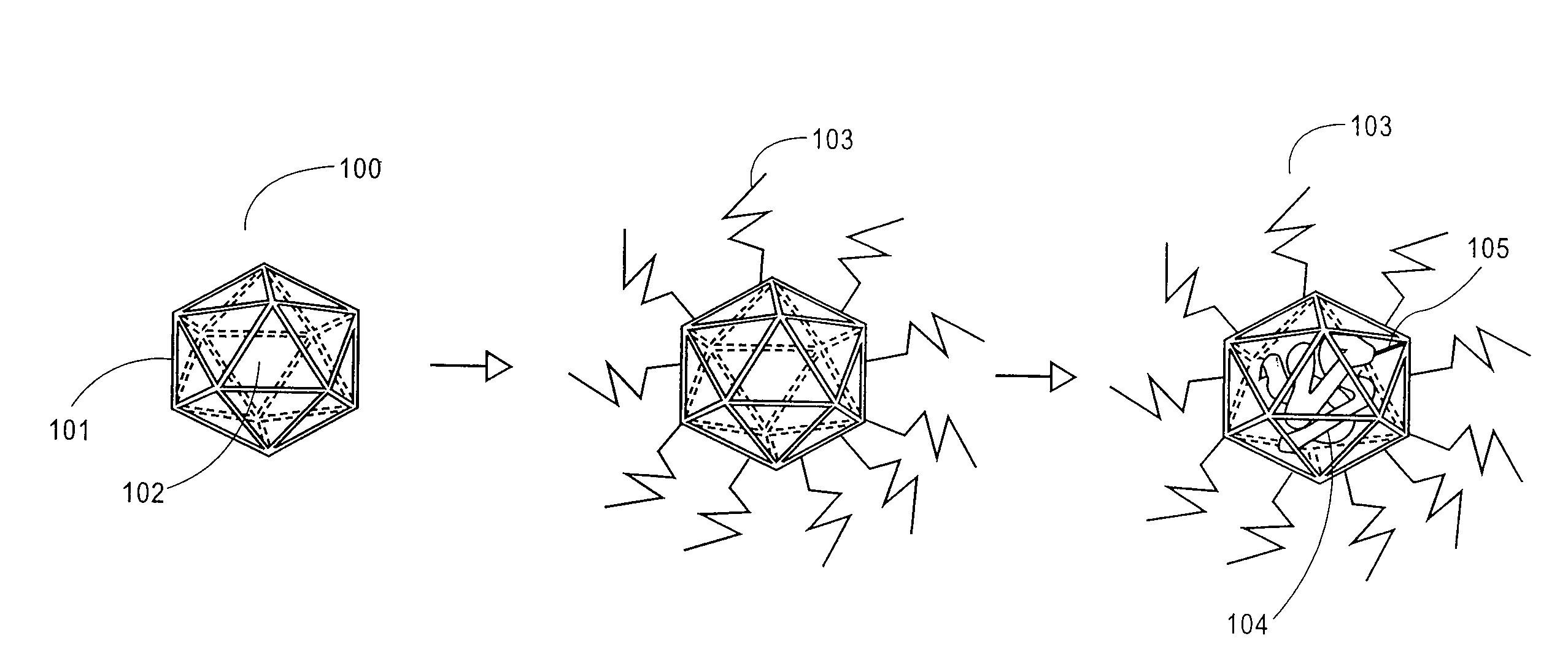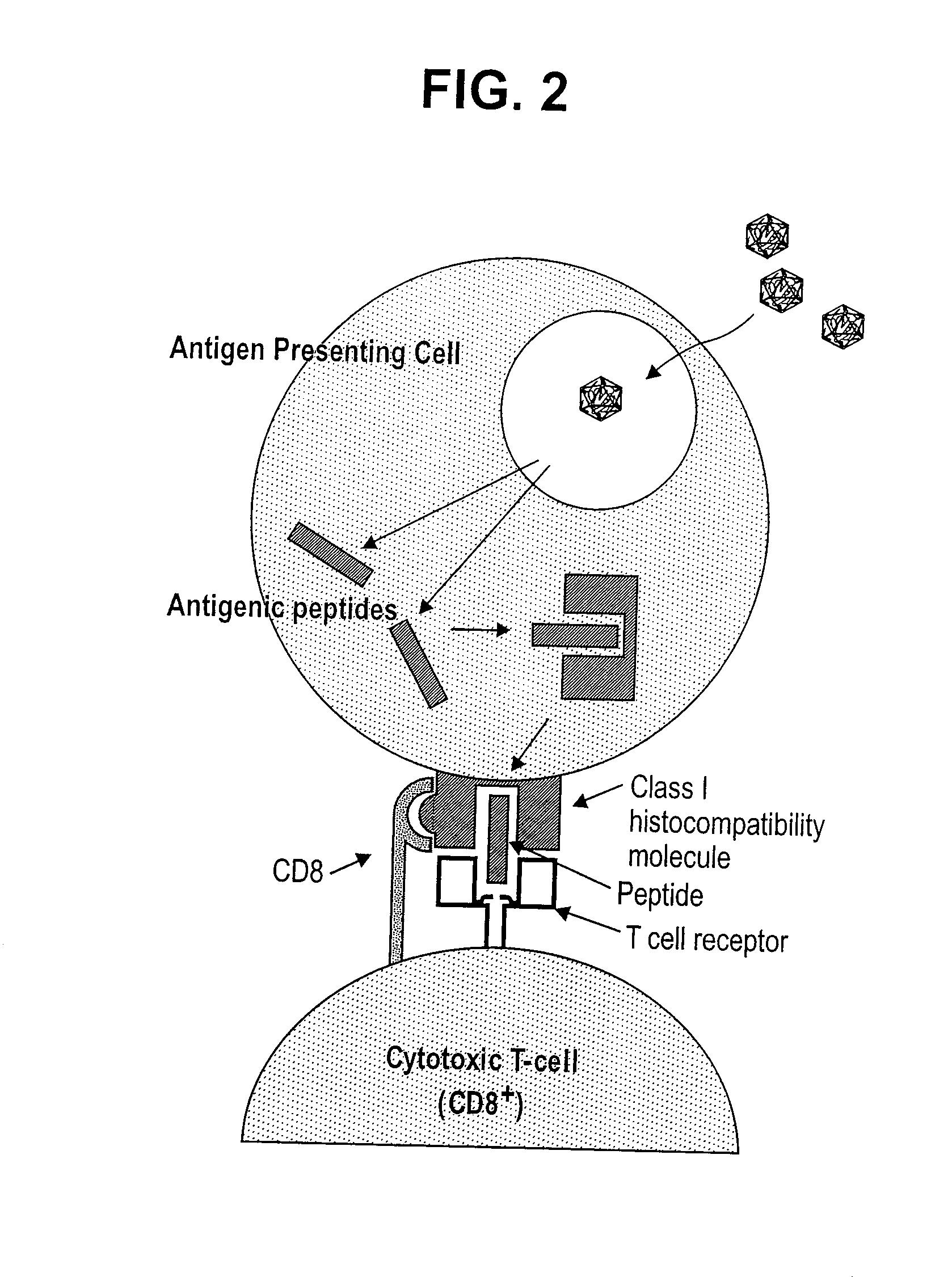Protein cage immunotherapeutics
a protein cage and immunotherapy technology, applied in the field of protein cage immunotherapy, can solve the problems of hampered ability to develop effective cancer vaccines, difficult for the immune system to distinguish cancer cells from normal cells,
- Summary
- Abstract
- Description
- Claims
- Application Information
AI Technical Summary
Benefits of technology
Problems solved by technology
Method used
Image
Examples
example 1
[0105]Human papilloma Virus Type 16 (HPV 16) is associated with and is considered to pose a high risk for development of cervical dysplasia and cervical cancer in women and anal dysplasia and anal cancer in women and men. The E7 protein from HPV 16 is an oncogene which is known to be a transforming agent and is known to be expressed in precancerous and cancerous lesions caused by its continual presence. Once appropriately stimulated, the immune system of a human with such virally induced lesions should be able to eradicate cells expressing antigenic peptides derived from this protein.
[0106]To construct a therapeutic vaccine, one that will activate and stimulate the immune system to attack and destroy already existing lesions, the HPV 16 E7 is entrapped in a ProteoCage composed of the small heat shock protein of M. jannaschii. The E7 protein or a portion thereof is covalently attached to the inside (or outside) of the Hsp ProteoCage via a suitable linker.
[0107]To demonstrate the appr...
example 2
[0109]Human papilloma Virus Type 16 (HPV 16) is associated with and is considered high risk to cause cervical dysplasia and cervical cancer in women and anal dysplasia and anal cancer in women and men. The E6 protein from HPV 16 is an oncogene which is known to be a transforming agent and is known to be expressed in precancerous and cancerous lesions caused by its continual presence. Once appropriately stimulated, the immune system of the human with such virally induced lesions should be able to eradicate cells expressing antigenic peptides derived from this protein.
[0110]To construct a therapeutic vaccine, one that will activate and stimulate the immune system to attack and destroy already existing lesions, the HPV 16 E6 is entrapped in a Hsp ProteoCage composed of the small heat shock protein of M. jannaschii. The E6 protein or a portion thereof is covalently attached to the inside (or outside) of the Hsp ProteoCage via a suitable linker.
[0111]To demonstrate the appropriate activi...
example 3
[0113]Human papilloma Virus Type 18 (HPV 18) is associated with and is considered high risk to cause cervical dysplasia and cervical cancer in women and anal dysplasia and anal cancer in women and men. The E7 protein from HPV 18 is an oncogene which is known to be a transforming agent and is known to be expressed in precancerous and cancerous lesions caused by its continual presence. Once appropriately stimulated, the immune system of the human with such virally induced lesions should be able to eradicate cells expressing antigenic peptides derived from this protein.
[0114]To construct a therapeutic vaccine, one that will activate and stimulate the immune system to attack and destroy already existing lesions, the HPV 18 E7 is entrapped in a ProteoCage composed of the small heat shock protein of M. jannaschii. The E7 protein or a portion thereof is covalently attached to the inside (or outside) of the Hsp ProteoCage via a suitable linker.
[0115]To demonstrate the appropriate activity i...
PUM
| Property | Measurement | Unit |
|---|---|---|
| diameter | aaaaa | aaaaa |
| molecular weights | aaaaa | aaaaa |
| molecular weights | aaaaa | aaaaa |
Abstract
Description
Claims
Application Information
 Login to View More
Login to View More - R&D
- Intellectual Property
- Life Sciences
- Materials
- Tech Scout
- Unparalleled Data Quality
- Higher Quality Content
- 60% Fewer Hallucinations
Browse by: Latest US Patents, China's latest patents, Technical Efficacy Thesaurus, Application Domain, Technology Topic, Popular Technical Reports.
© 2025 PatSnap. All rights reserved.Legal|Privacy policy|Modern Slavery Act Transparency Statement|Sitemap|About US| Contact US: help@patsnap.com



